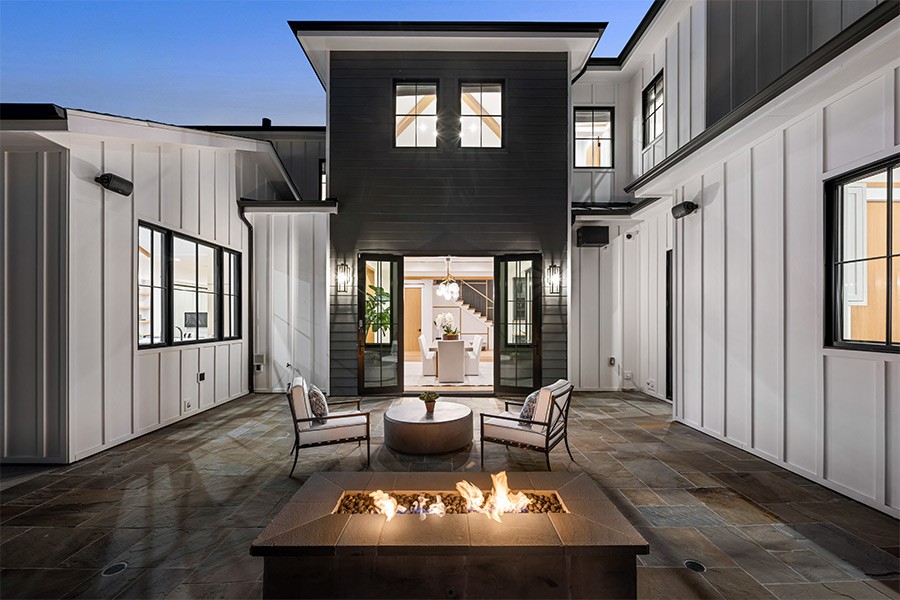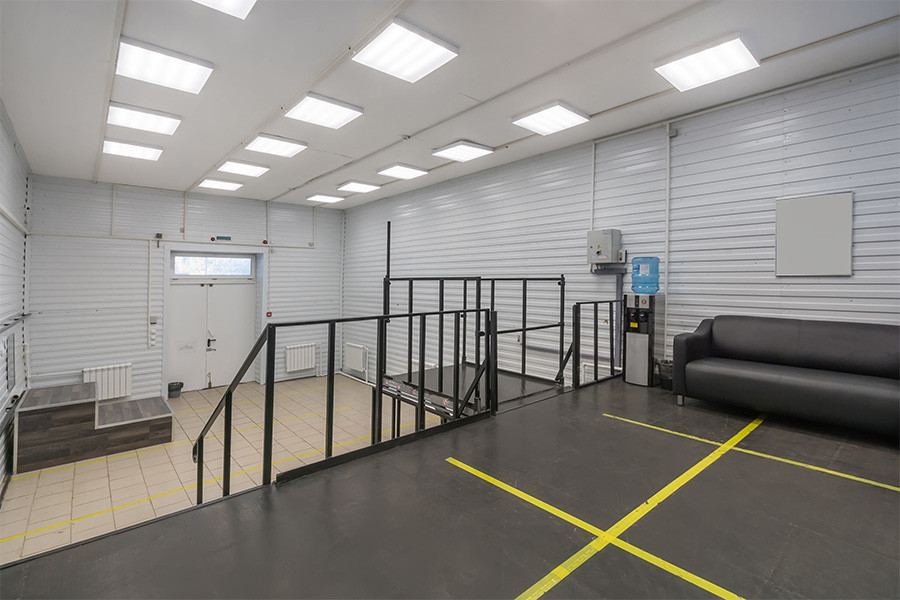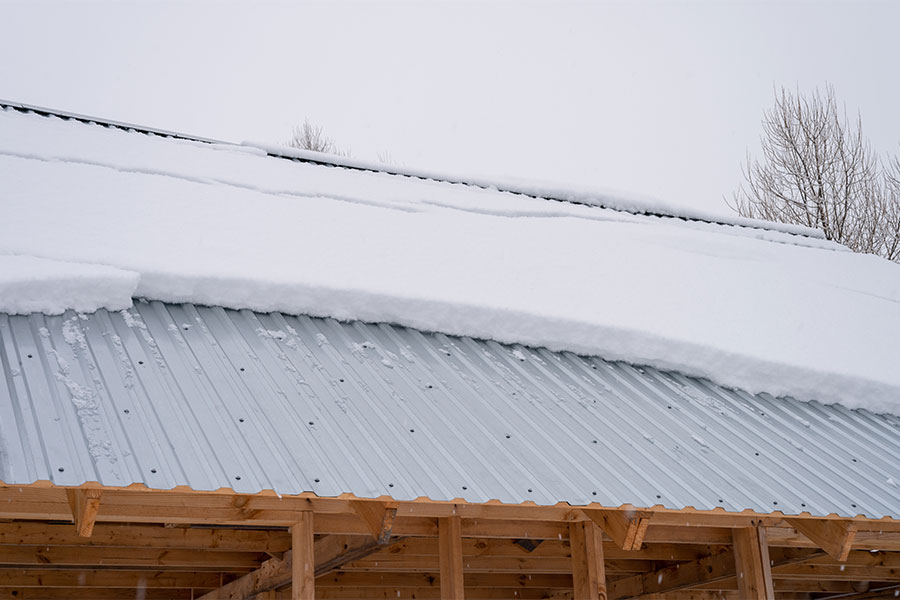Functional. Stylish. Durable.
Metal siding panels can easily be described with these words and more. Using metal panels as siding has grown in popularity over the years, offering sleek, long-lasting value to commercial and residential properties.
Notably, two styles have stood out amongst the crowd are shiplap metal panels, also known as flush wall panels, and board and batten metal panels. Both offer a timeless, polished aesthetic for properties. Both have the trademark strength and durability that metal panels are famous for. Both are incredibly versatile for indoor and outdoor applications.
So, how do you choose between the two?
Making an informed decision is crucial for every metal siding project. Let’s dive into the details of metal shiplap vs board and batten and see how these metal panel profiles stack up against each other.
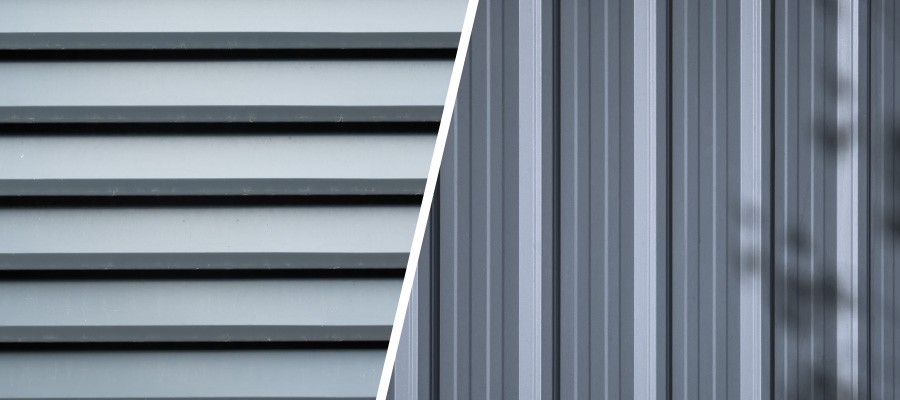
Understanding the Basics: Shiplap Metal Panels
Traditionally, shiplap refers to a type of wood paneling where the panels overlap with a recessed joint that helps to seal out moisture. In metal shiplap panels, this design is mimicked by creating panels that overlap in a similar fashion, providing a sleek, smooth appearance with enhanced water resistance.
Shiplap panels are concealed fasteners that, at Great Northern Metal Company, we call flush wall panels. These panels are typically used in residential projects for their elegant appearance, but they are increasingly popular in commercial buildings due to their modern look and excellent durability.
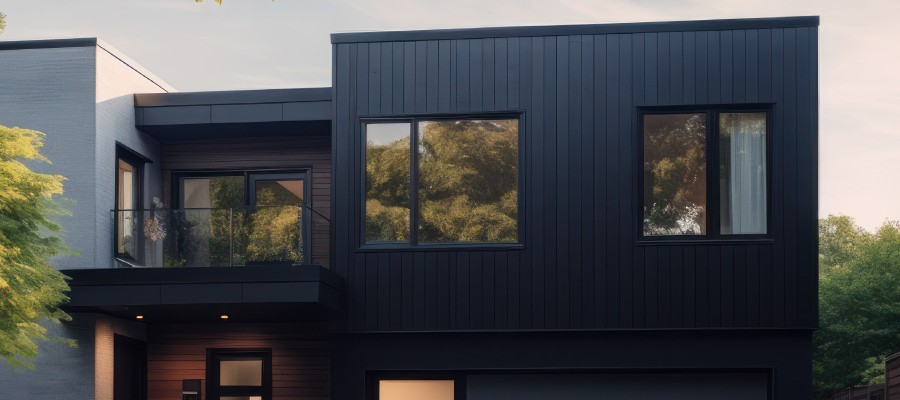
Aesthetic
Shiplap offers a clean, contemporary look with its seamless joints and minimalistic profile. It’s particularly favored in modern architectural designs where a smooth exterior facade is desired, blending beautifully with glass, stone, and wood.
Durability and Maintenance
Like metal roofing panels, metal shiplap siding panels are highly durable and resistant to harsh weather conditions, including heavy rains, winds, and snow. The interlocking design helps prevent moisture ingress, making it less prone to rust and decay. Bonus: maintenance is straightforward, typically requiring only regular cleaning to maintain its appearance.
Installation
Despite their interlocking design, the installation of shiplap metal panels is quite complex and ranks as a five on our installation difficulty scale, with one being the easiest and five being the most difficult. This rating reflects the precision and careful handling required to ensure that the panels align seamlessly and snap into place correctly. The intricate nature of this installation often extends the time spent on site and may increase labor costs.
Cost Effectiveness
While the initial cost of shiplap metal panels can be higher than some other siding options, their longevity and low maintenance requirements offer cost savings over time. They are an excellent investment for those looking for a balance of style and durability.
Board and Batten Metal Panels: A Closer Look
Traditional board and batten panels feature alternating wide boards and narrow wooden strips, known as battens, creating a raised, framed look. The metal version of board and batten siding maintains this aesthetic with metal panels designed to mimic this pattern, providing a more dimensional and textured façade. This concealed fastener panel is ideal for adding dimension and visual interest to the exterior of a building and is often used in more traditional or rustic designs.
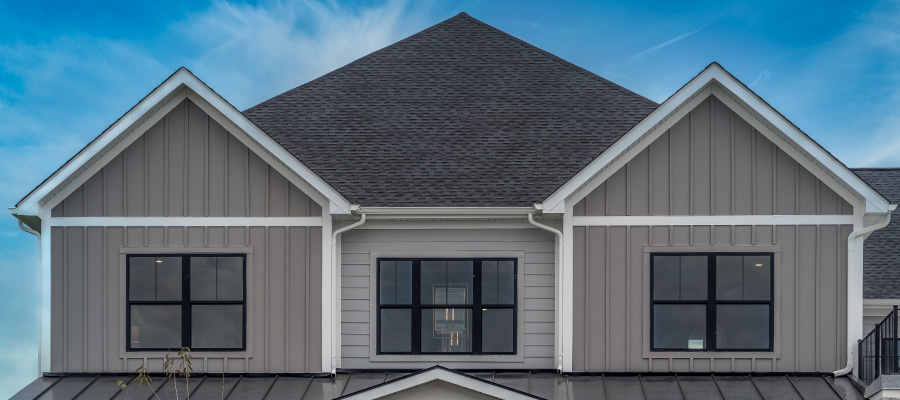
Aesthetic
Board and batten brings a classic, time-honored aesthetic with its pronounced seams that cast shadows and create depth. It’s well-suited for historic renovations or new buildings seeking a traditional feel with the benefits of modern materials.
Durability and Maintenance
Like shiplap, and really any metal panel, board and batten metal panels are built to last. They withstand harsh climates and resist common issues like pest infestations and moisture damage. However, regular inspections are recommended to ensure the battens remain sealed and free from debris.
Installation
Board and batten panels are slightly easier than shiplap to install. On our installation difficulty scale, they rank at about a three in terms of difficulty. Because of the installation complexity, this can lead to higher labor costs and a longer installation timeframe, but less so than shiplap.
Cost Effectiveness
Because of its lower installation difficulty, board and batten can be less expensive to install than shiplap. Bonus, its durability and the distinctive look it provides can enhance property value, making it a worthwhile long-term investment.
Comparing the Two: Shiplap vs Board and Batten
Choosing the right metal siding—whether it’s shiplap or board and batten—requires careful consideration of each factor. These considerations ensure that the selected style not only meets aesthetic desires but also performs well under specific environmental and architectural conditions. Here’s a detailed comparison of shiplap vs board and batten to help guide your decision:
Aesthetic Impact
Shiplap provides a sleek, modern look with smooth, continuous lines. This style is ideal for contemporary designs or for creating a subtle backdrop that doesn’t distract from other architectural features. Its minimalist profile is particularly effective in urban settings or commercial properties where a clean, streamlined appearance is desired.
On the other hand, board and batten offers a more pronounced, textured look that can add character and visual interest to a structure. Its alternating wide and narrow panels create a striking pattern of shadows and highlights, lending a rustic or traditional charm that is perfect for country homes, barns, or historical buildings. This style can also be adapted to suit more modern designs by varying the widths of the battens and boards.
Installation Complexity
Contrary to what might be expected, shiplap panels, despite their interlocking design, rank high on the difficulty scale for installation. The installation of shiplap panels requires precise alignment and meticulous handling, making the process challenging and time-intensive. The panels must align seamlessly to maintain the integrity of their appearance and function, necessitating precise measurements and adjustments during mounting.
On the other hand, board and batten, while also challenging, involves a slightly less complex installation process. This can mean less labor and costs associated with installation, making it a simpler option than shiplap.
Durability and Weather Resistance
Both styles are made from durable metal materials that withstand severe weather conditions. However, the design of each can affect their performance.
Shiplap’s tight overlap helps shield the seams from water ingress, making it exceptionally good at preventing leaks and water damage. Board and batten has a naturally good drainage system due to its vertical design, which helps prevent water accumulation. However, proper installation is crucial to seal the areas where battens cover the board joints to avoid potential water penetration.
Maintenance Needs
Maintenance for these two panels is relatively the same for both. They both offer the benefits of metal panels, meaning they shed water and debris with ease. Only the occasional maintenance check is needed to keep these panels looking bright and new.
Cost Considerations
The cost of shiplap and board and batten can vary depending on the material used and the specific product line. Generally, board and batten may be more cost-effective upfront due to its slightly easier installation, while shiplap might offer a greater increase in property value due to its classic appearance.
How to Choose the Right Style for Your Project
Since both panels offer the inherent benefits of metal panels, a lot boils down to personal preference when choosing between shiplap and board and batten metal panels. However, if you have a tight budget and installation limitations, you may want to consider the price point of each panel type and their installation difficulty levels. Here’s a more detailed walkthrough to help you decide which siding style best fits your project:
- Consider the Architectural Style of the Building: Think about the impression you want to make with the siding and what your desired “curb appeal” is.
- Evaluate the Building’s Environmental Exposure: In Montana, our weather changes like, well, the weather. So, considering your area’s local weather conditions can impact which panel profile you choose.
- Consider Your Budget, Including the Cost of Supplies, Installation, and Maintenance: Upfront costs and long-term value all play a part in your budget, so consider which panel profile best fits your financial situation.
- Future Considerations: Think about how each option will age with the building and whether it can adapt to possible future changes in use or expansions.
Need a Hand Choosing Between Shiplap and Board and Batten?
Whether you’re drawn to the sleek appearance of metal shiplap or the classic charm of board and batten, both materials offer durable, long-lasting solutions for any Montana construction or renovation project. Consider how each option would blend with your property’s style and meet your performance expectations.
Are you ready to choose the perfect metal siding for your project? Contact our team for a quote! At Great Northern Metal Company, we have decades of combined experience in the Montana metal roofing and siding industry. We aim to match your project with the panel profile that will give you the best performance for your budget and goals. Let us help you make your vision a reality—today
